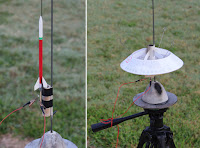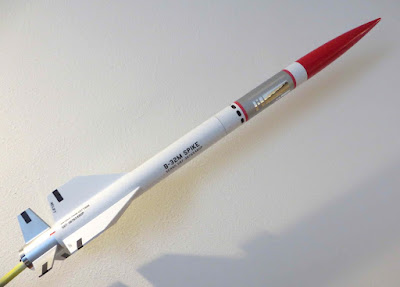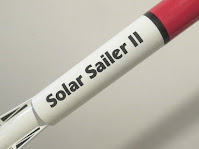An email from Jeff asked: "Are you okay? And no launch reports since Jan or Feb?"
There are some reasons why I haven't done any launching, actually since last May.
Over the years I tend learned to shy away from Summer launches in Florida. A long day in the sun leaves me to "recover" the following day. On some Summer club launch days the field is flooded.
I've been building a LOT of show models for Estes and Quest/Aerotech.
Some days are filled with blogging, building rockets and bagging up kits. By the time the weekend rolls around, I'd rather spend time with my daughters than have another full rocket day.
So I'm okay! I just haven't been to the school soccer field in a while until yesterday.
I prepped some rockets, A and B motors and a C in the 3/4 size Centuri Saucer.
All the models were recent new builds from the blog.
My continuity light was dim. I didn't even think about new batteries.
The first try was the Micro Maxx ASP Sandia Sandhawk. These usually take a second or two to ignite. Nothing!
I slid the Centuri Saucer down the launch rod. Press and hold - press and hold - Nothing!
One last try with a new, BP dipped igniter.
The New Way DER SQUARED MAX with an Estes A8-3.
I held down the button, the camera was taking burst pictures. Nothing.
I released the camera shutter and looked away for a second - Whoosh!
First launch for this new build. No launch picture.
Maybe 200 feet with a little drift as the winds were starting up. No damages, just wet dew on landing.
Here's what I hoped to fly this morning - all recent new blog builds.
The Estes Shuttle, Solar Sailer II and the EAC Firecat clone.
Note to self - Install new Alkaline batteries.






















































